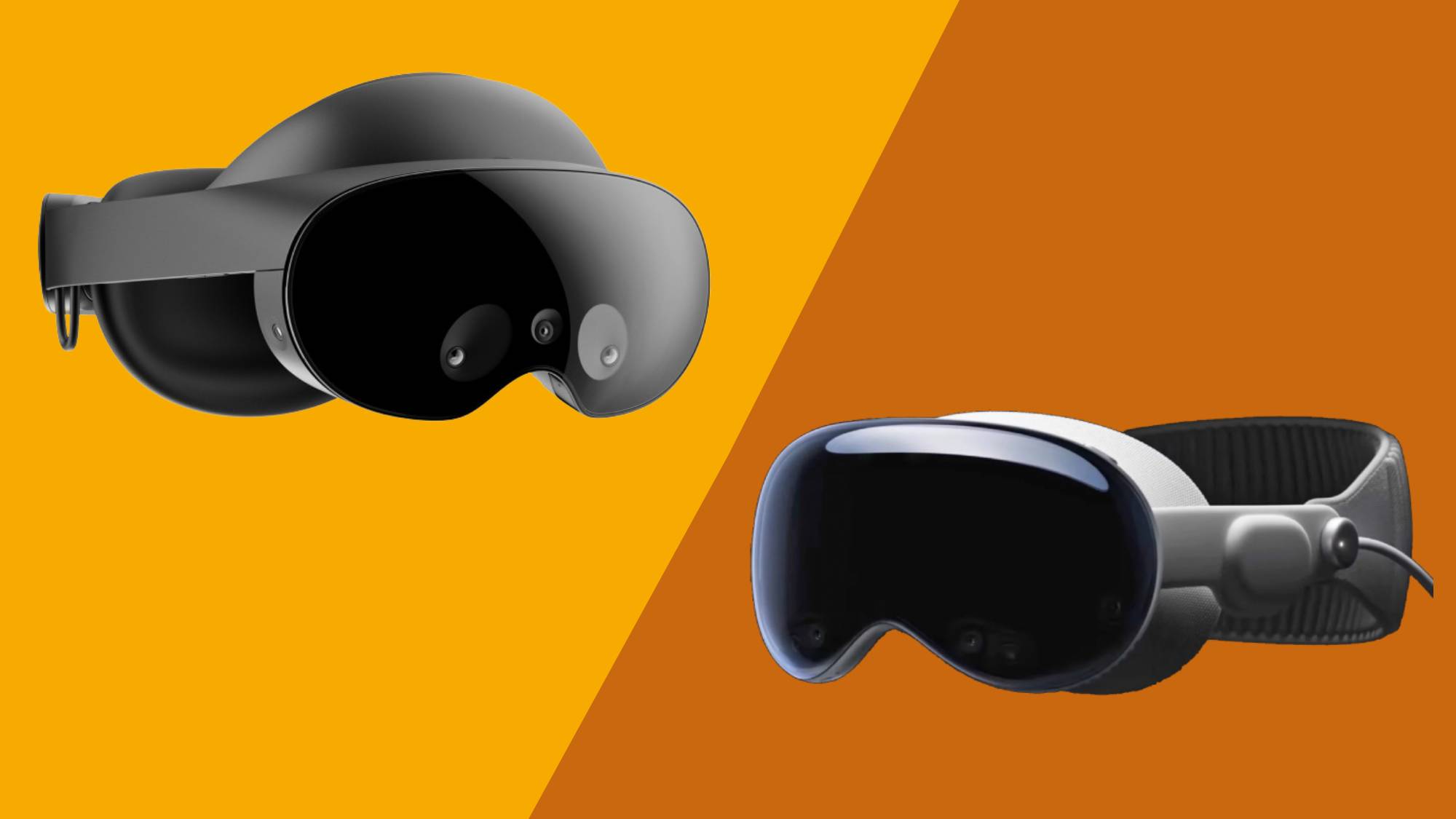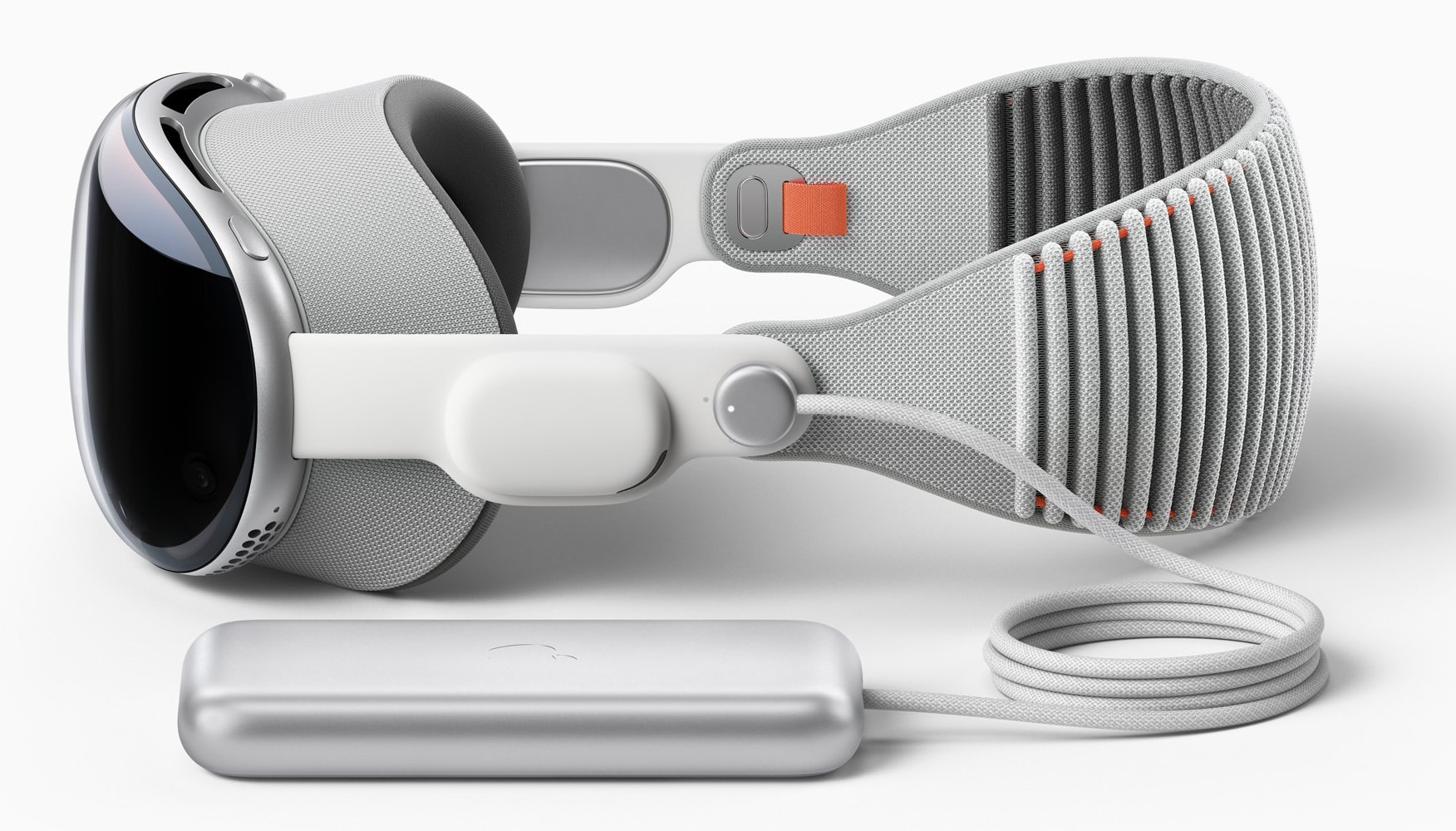Apple Vision Pro vs Meta Quest Pro: which VR headset is best for you?
Should you wait for the Vision Pro or get a Quest Pro today?

The Apple Vision Pro has reignited interest in the VR space – you can read our full Apple Vision Pro review for our comprehensive verdict on the the mixed-reality headset – but how does it stack up against the existing competition: the Meta Quest Pro?
We’ll run you through all the major differences between the Meta Quest Pro and Apple Vision Pro. That way, you can decide if you should buy the Meta hardware today or hold off until 2024 for the super-expensive Apple alternative.
We’ll compare their design, specs, features, software, and price, so you can decide which side you’re on in the Apple Vision Pro vs Meta Quest Pro debate.
Apple Vision Pro vs Meta Quest Pro: Design
Despite both being VR-capable headsets, the Meta Quest Pro and Apple Vision Pro have a fair few design differences.
The first on our list is battery placement. The Meta Quest Pro houses its battery at the back of its head strap, using it as a counterbalance to the displays and other components that sit in a box on the wearer’s face. Apple has taken the battery out of the headset altogether, moving it to an external pack you put in your pocket.
This decision should help with the headset's weight, but considering the Vision Pro has packed in significantly more parts than the Quest Pro, we expect it won’t be too much lighter than its rival. We won’t know for certain, though, until Apple announces how heavy its headset is.

Another change is that the Vision Pro has a display on the front that can show the user’s eyes if they’re in an AR experience (or a cloud of color if they’re immersed in a VR one). Apple says this Eyesight feature makes talking to someone wearing the headset feel less like you’re talking to a robot, but we can’t decide if this is neat or a bit creepy, so it’ll be up to your personal feelings.
Sign up for breaking news, reviews, opinion, top tech deals, and more.
Last but not least, the biggest design difference between the headsets is that the Vision Pro lacks controllers. The Meta Quest Pro uses two handsets to allow wearers to interact with virtual worlds. To make them more accurate than other available options they have in-built cameras that facilitate improved tracking.
The Vision Pro relies entirely on hand-tracking and eye-tracking to navigate menus, which certainly looks neat but could cause problems for developers – many existing VR apps only support controllers, many of which share a button layout. Apple’s hand-tracking-only system could make it a challenge to port these apps over to the Vision Pro.
Apple Vision Pro vs Meta Quest Pro: Price
Neither the Vision Pro nor the Meta Quest Pro is what we’d call budget-friendly, but the Meta headset is a lot more affordable than Apple’s.
The Quest Pro will set you back $999.99 / £999.99 / AU$1,729.99, for its only 256GB model, while the Vision Pro starts at $3,499 (around £2,800 / AU$5,300). Apple hasn’t released full pricing details yet – so we don’t know how expensive models will get, nor what extra perks they'll have – but it looks like even the base version will put other headsets to shame.

Apple argues that its headset, with its 4k display and immersive surround sound, is like a high-end hi-fi setup in a single device. As such, Apple suggests that the device is a bargain. However, when you consider that only one person at a time can enjoy the headset’s immersive entertainment experiences and that they can only be enjoyed for two hours on a single charge, then the price might still seem steep.
If you’re on a budget, you’ll either have to pick up the cheaper Quest Pro or wait for Apple to launch a cheaper option. Leaks say an affordable follow-up to the Vision Pro is on the way, but nothing is guaranteed until Apple announces it.
Apple Vision Pro vs Meta Quest Pro: Specs and features
As we mentioned in the price section, specs-wise, the Vision Pro seems set to blow every other commercial standalone headset out of the water, including the Meta Quest Pro.
The Quest Pro has fairly respectable hardware powering its software and features. It boasts 256GB of storage, 12GB of RAM, and a Qualcomm Snapdragon XR2 chipset. That said, it likely can’t compete with Apple’s headset. While we don’t have all the details we know it offers two chipsets - an M2 and an R1. The M2 is what you’ll find in Apple’s best iPads and even some of the best Macs and MacBooks, while the R1 is dedicated to running the XR capabilities of the Vision Pro. These dual processors will almost certainly guarantee software runs better on the Vision Pro versus the Quest Pro.
We don’t yet know how much RAM and storage the Vision Pro offers, but we expect it’ll at least be in the same ballpark as the Quest Pro. We do know, however, that the Vision Pro's display will be leagues ahead of the Quest Pro. It’ll use dual micro-OLED 4k displays – one per eye – that each offer roughly 23 million pixels. This means they’ll support significantly crisper visuals than the Meta Quest Pro’s dual miniLED LCD 1,920 x 1,800-pixel displays.
Lastly, the Vision Pro is jam-packed with cameras and sensors to support its mixed reality and eye-tracking capabilities; they can even be used to create a 3D scan of your face that you can use for VR video calls. The Quest Pro has similar sensors, but based on our experience with both headsets, Apple’s are better – and the Vision Pro has more of them too. The Quest Pro headset has five cameras; the Vision Pro has 12.

Thanks to its souped-up specs, it looks like the Vision Pro can do everything the Meta Quest Pro can do, but better. This includes higher-quality mixed reality and more impressive hand tracking.
The Quest Pro’s mixed reality is passable, but its video feed of the real world is pretty grainy, which greatly reduced the immersion we experienced from it. It also boasts solid hand-tracking, but Apple’s Vision Pro takes things up a gear by incorporating eye-tracking to make it more accurate.
Apple Vision Pro vs Meta Quest Pro: Software
Software is one area where Meta currently has the edge, but that’s in part because Apple hasn’t divulged many details about what software its headset will launch with. So while it’s currently in second place in this department, that could change.
Meta’s Quest store has a solid selection of apps for entertainment, fitness, socializing, and productivity. Many of the best VR games are found on Meta’s Quest hardware, and there’s a huge selection of sports and workout-focused apps that’ll turn your living room into a home gym. For VR socializing you can use the Facebook Messenger app, Horizon Worlds, or a handful of third-party metaverses like VR Chat. Meanwhile, productivity apps like Gravity Sketch are great for designing real-world objects and VR game worlds. What’s more, in the near future Microsoft will launch its Office apps on Quest to bring more traditional productivity software to the platform.

The Vision Pro, on the other hand, doesn’t seem set to offer much more than some basic apps that would come pre-installed on an iPhone 14, such as FaceTime, Apple TV Plus, and Apple Music. The only way to get more out of it is to connect it to one of the best Macbooks and use it as a VR workstation. When you consider that the headset has its own M2, we can’t help but feel that it should be able to run most Mac apps on its own.
Hopefully, Apple will announce more Vision Pro software closer to its launch, as currently, it looks like it’ll have a lot of power and nothing to do with it.
Apple Vision Pro vs Meta Quest Pro: Verdict
For those of you on a budget or desperate to get a headset today, the Quest Pro (or even a cheaper headset like the Oculus Quest 2 or recently announced Meta Quest 3) will be the best option for you.
But if affordability isn’t a concern, and you don’t mind waiting until 2024, then the Vision Pro might win out for you. Specs- and features-wise, it seems all but certain that Apple’s headset will be more powerful than any previous standalone VR headset, but currently, it looks like it’ll be held back by software.

Currently, the Vision Pro’s app library looks significantly worse than the Quest Pro’s in terms of breadth and quality of software, but it’s early days for the Apple headset. If Apple announces that several impressive must-have apps are coming to the Vision Pro, everything will be fine. However, if its app selection stays as limited as it is right now, then you’ll have a powerful and expensive headset that doesn’t do all that much. If Apple doesn’t solve this software situation, we expect most people will be better off with a Quest headset.
Want to check out other options? Check out our picks for the best VR headsets.

Hamish is a Senior Staff Writer for TechRadar and you’ll see his name appearing on articles across nearly every topic on the site from smart home deals to speaker reviews to graphics card news and everything in between. He uses his broad range of knowledge to help explain the latest gadgets and if they’re a must-buy or a fad fueled by hype. Though his specialty is writing about everything going on in the world of virtual reality and augmented reality.